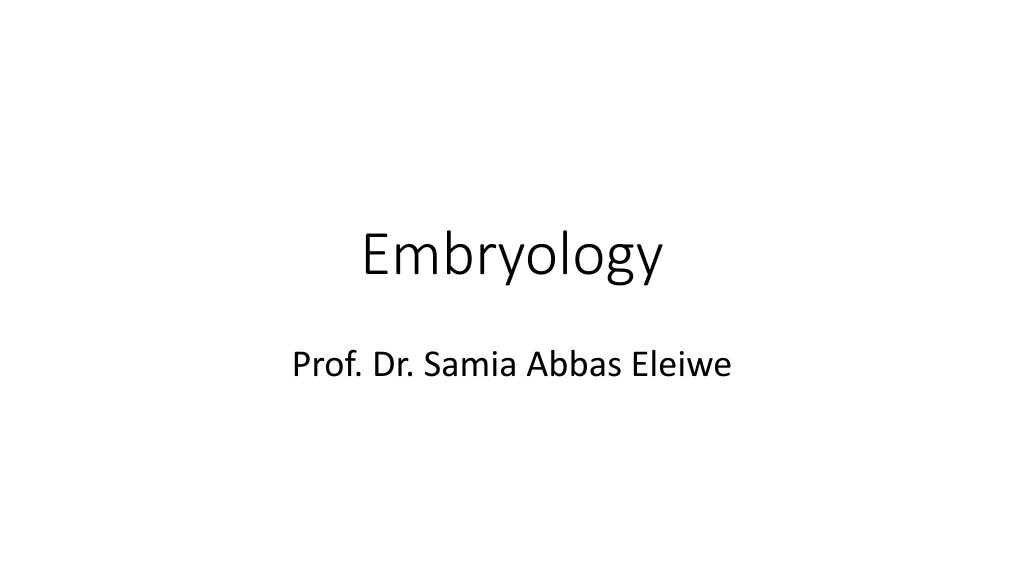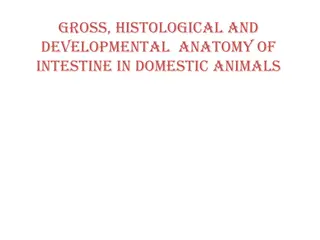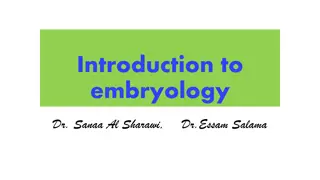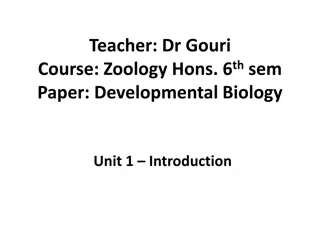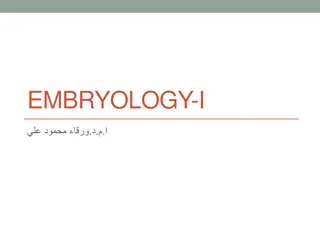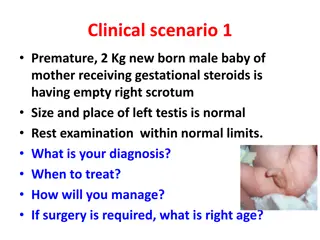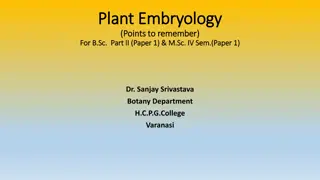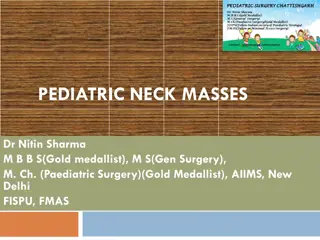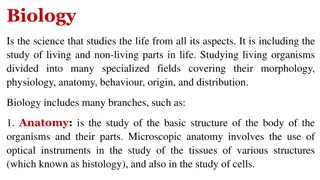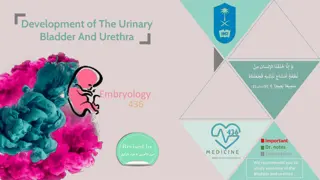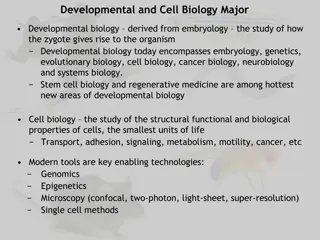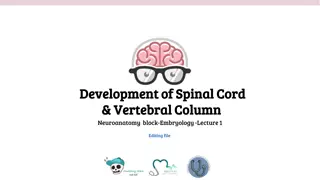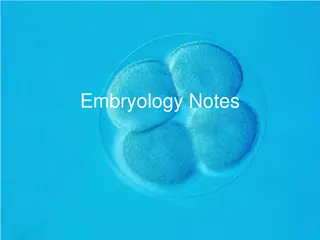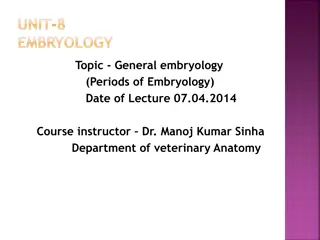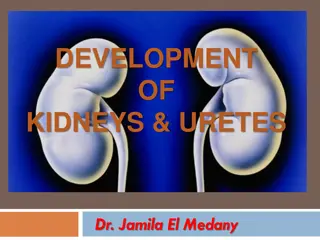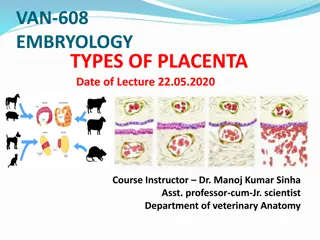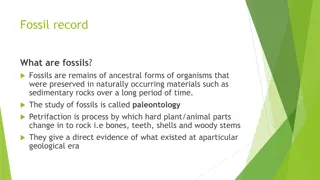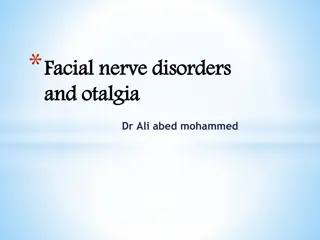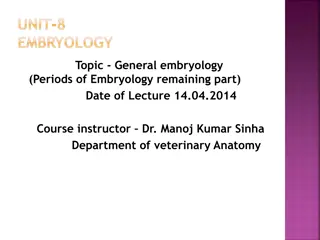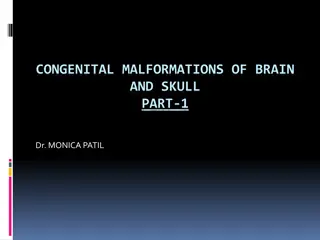Embryology
Delve into the fascinating world of human embryology and genetic development with a focus on essential events like germ cell migration, mitosis, meiosis, and chromosomal structure. Understand the intricate processes that shape the formation of new life and learn how these principles play a crucial role in diagnosing, caring for, and preventing birth defects. Explore the journey of germ cells as they divide and differentiate, ultimately contributing to the production of sperm and oocytes. Discover the intricate relationship between DNA, genes, and chromosomes, unraveling the hereditary units that control development in human cells through mitosis and other key stages of cellular division.
Download Presentation

Please find below an Image/Link to download the presentation.
The content on the website is provided AS IS for your information and personal use only. It may not be sold, licensed, or shared on other websites without obtaining consent from the author. Download presentation by click this link. If you encounter any issues during the download, it is possible that the publisher has removed the file from their server.
E N D
Presentation Transcript
Embryology Prof. Dr. Samia Abbas Eleiwe
Embryology focus on essential events to understand principles of embryogenesis that can be used to diagnose, care, & prevent birth defects.
germ cells occur at end of 3rd week of development in wall of yolk sac near attachment of future umbilical cord. They migrate by amoeboid movement toward developing gonads of embryo.
germ cells divide by mitosis during journey. In embryonic gonads, germ cells undergo meiosis and cytodiffernetiation for production of sperms or oocyte (gametogenesis).
Humans have 46 chromosomes in their cells appearing as 23 homologous pairs, each chromosome is made of fine filaments that are made of DNA chain covered by proteins (mainly histone).
DNA shows loci (genes): hereditary units controlling development. human cells contain about 100,000 genes. Somatic cells have 22 pairs of autosomal chromosome and a pair of sex chromosome (XX or XY).
Mitosis: Mitosis: 1. prophase; diploid number of 46 chromosome replicating their DNA contents (from N to 2N) beginning of chromosome to be coiled, condensed and contract.
2. Prometaphase: each chromosome seen as two parallel chromatids connected by a centromere Each chromatid contains DNA amount (N), nuclear membrane is degenerating
3. Metaphase: doubled structured chromosomes are in equator ( chromosome seen by light microscope). 4. Anaphase: centromeres separate separation of chromatids that migrate toward poles.
5. Telophase: chromosome uncoiled & diffused inside reformed nuclear membrane, & cytoplasm divides. Daughter cells contain same diploid 46 single structured chromosome number & N amount of DNA (as mother cells).
Meiosis: Meiosis: two steps Meiosis I: where changes similar to that of mitosis. But homologous chromosomes are paired in meiosis I by synapsis forming 22 pairs of doubled structured chromosome (except the 2 sex chromosome).
At final phase of meiosis I each pair of chromosome will be separated into each of daughter cells. each daughter cell contains haploid 23 doubled structured chromosome number with N amount of DNA.
During meiosis I crossovers interchange of segments between chromatids of a pair of chromosome resulting in genetic variability & new chromosomes. point of interchange is united, an X-like structure is formed called chiasma formation. Then interchanged segments break and exchange.
Meiosis II: result in two daughter cells each of them containing haploid 23 single structured chromosome number with half amount 1/2 of DNA.
Cytodifferentiation These are cellular changes during gametogenesis: This comes after meiotic divisions.
